Documentation Hub
Comprehensive technical manuals and guides to help you master HARSLE machines and optimize your metalworking efficiency
How Does Panel Bender in Kitchenware Enhance Production Quality?
Panel Bender in Kitchenware manufacturing has become a game-changer for modern stainless steel production lines. In today’s competitive market, achieving precision, cleanliness, and speed is essential for producing high-quality kitchenware. Even a slight error in bending accuracy can compromise assembly fit, hygiene standards, and overall product quality. That’s why more manufacturers are integrating panel benders into their kitchenware fabrication processes. With advanced automation, consistent accuracy, and intelligent tooling systems, these machines deliver flawless bends every time. In this article, I’ll show how panel benders enhance production quality, minimize material waste, and ensure every stainless steel kitchen component meets the most demanding manufacturing standards.
How Panel Bender Works in Kitchenware Production
A panel bender operates differently from a traditional press brake. Instead of using upper and lower dies to press the metal, it employs a bending blade that moves around the material, ensuring uniform bending from all angles. This technique is especially beneficial for producing stainless steel kitchenware such as sinks, cabinets, and serving counters, where appearance and accuracy are equally important.
Automated Tool Adjustment for Consistent Results
One of the biggest advantages of the Panel Bender in Kitchenware manufacturing is its automatic tool adjustment system. The machine can change bending angles and radii without manual intervention. This not only saves setup time but also eliminates human error, ensuring that every piece of kitchenware maintains consistent dimensions and finish.
Precision Bending for High-Quality Surfaces
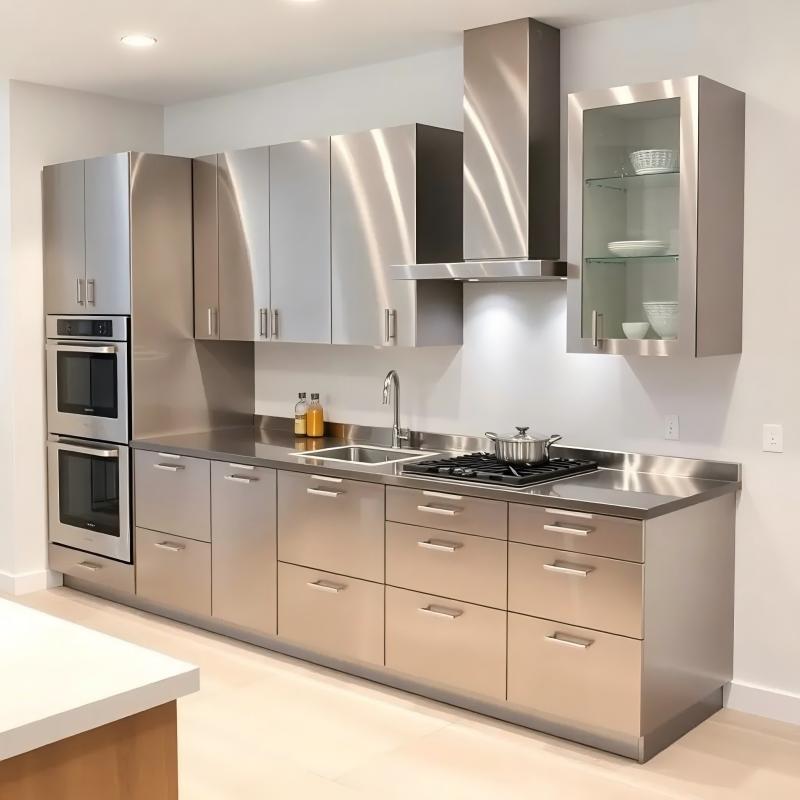
Panel benders provide extremely tight tolerances, typically within ±0.02 mm. Such precision is critical when manufacturing stainless steel kitchenware, where any surface imperfection could impact the product’s usability and hygiene. The smooth bending motion also prevents scratches and deformation, keeping the metal’s natural shine intact.
Reduced Material Waste and Energy Consumption
Thanks to its automatic positioning and servo-controlled movements, the panel bender minimizes material waste and reduces rework. The efficient energy usage of the servo system further enhances sustainability—a key factor for modern kitchenware factories focused on cost control and environmental responsibility.
Advantages of Panel Bender in Kitchenware
Enhanced Efficiency in Batch Production
For mass production of kitchenware, time is money. The Panel Bender in Kitchenware fabrication can process multiple parts continuously with minimal manual handling. This automation reduces operator fatigue and boosts daily output significantly.
Perfect for Complex and Hygienic Designs
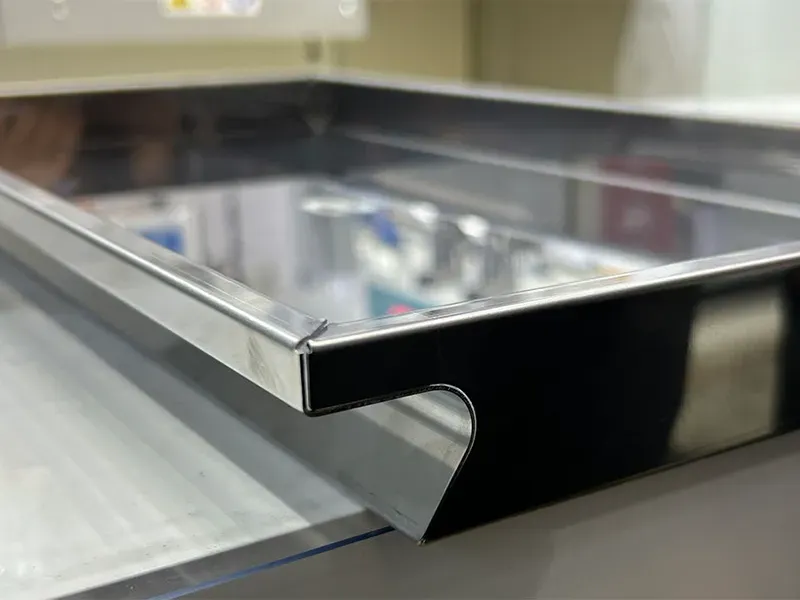
Hotel and commercial kitchen equipment often require complex bends and seamless corners. Panel benders are capable of performing multi-directional bends on a single setup, making it easy to produce hygienic designs that are easier to clean and maintain.
Lower Skill Requirement for Operators
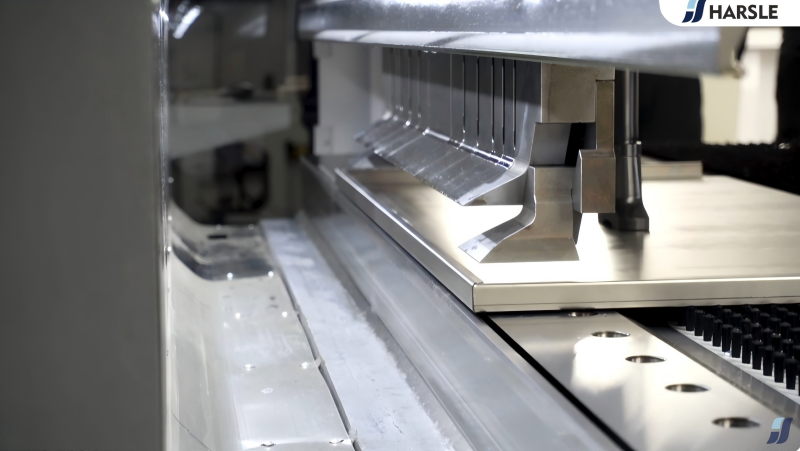
Unlike conventional press brakes that depend heavily on operator experience, panel benders are designed for simplified operation. Once the program is set, the machine executes the entire bending sequence automatically, allowing even less-experienced operators to achieve top-tier results.
Step-by-Step Guide to Using a Panel Bender for Kitchenware
Step 1: Material Preparation
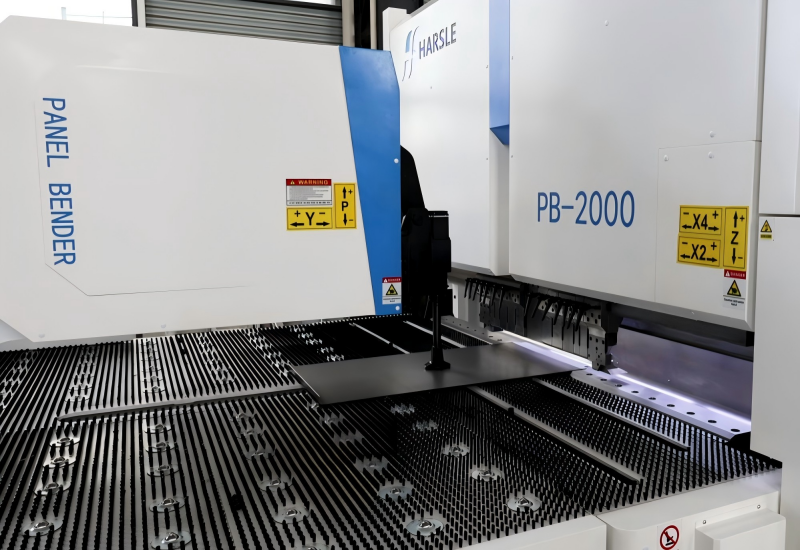
Ensure that stainless steel sheets are clean, flat, and within thickness specifications. Any dirt or irregularity can affect the bending precision and cause scratches.
Step 2: Programming the Bending Sequence
Using the control interface, input the desired bending angles, radii, and sequence. Many HARSLE panel benders support offline software that allows you to design and simulate bending operations before production.
Step 3: Automatic Tool Adjustment
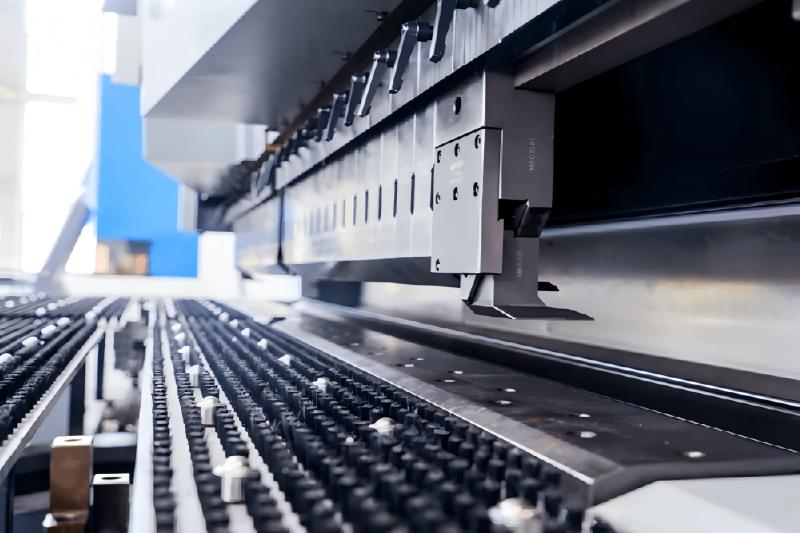
Once the program is confirmed, the machine automatically adjusts the bending tools and clamping fingers. This guarantees accurate alignment and saves preparation time.
Step 4: Bending and Quality Inspection
During the bending process, sensors monitor force and position in real-time. After completion, inspect the parts for uniformity, angle accuracy, and surface smoothness to ensure they meet the required standards.
Common Issues and Troubleshooting Tips
Uneven Bends
If you notice inconsistent angles, check the sheet placement and ensure the clamping system is free of debris. Proper calibration of the backgauge and sensors can also resolve this issue.
Surface Scratches
Surface scratches are usually caused by dust or worn contact areas. Regular cleaning and replacing damaged pads will prevent this problem.
Material Springback
For stainless steel, slight springback may occur. Adjusting the bending angle compensation in the software can easily correct this to maintain dimensional accuracy.
FAQs
What types of kitchenware can be made using a panel bender?
Panel benders are ideal for producing stainless steel sinks, cabinets, hoods, worktables, and storage units—essentially any item requiring high precision and smooth bends.
How does a panel bender improve kitchenware hygiene?
Because the machine achieves smooth, burr-free edges and seamless corners, the finished products are easier to clean and maintain, meeting food-grade hygiene standards.
Is a panel bender suitable for small-scale production?
Yes. While it excels in mass production, the fast setup and automatic adjustment make it efficient even for short runs and customized kitchenware designs.
How often should I maintain my panel bender?
Routine maintenance every 500 operating hours is recommended. This includes lubrication, software updates, and sensor calibration to keep the machine performing optimally.
Conclusion
In the stainless steel kitchenware industry, precision, efficiency, and hygiene are the pillars of quality. By integrating a Panel Bender in Kitchenware production lines, manufacturers can achieve superior bending accuracy, consistent quality, and shorter lead times. Whether producing large batches or custom pieces, the panel bender ensures every product meets the highest professional standards.
If you’re looking to upgrade your manufacturing line or want expert advice on the best panel bender for your needs, feel free to contact the HARSLE engineering team—we’re ready to help you build smarter, cleaner, and more efficient production systems.













